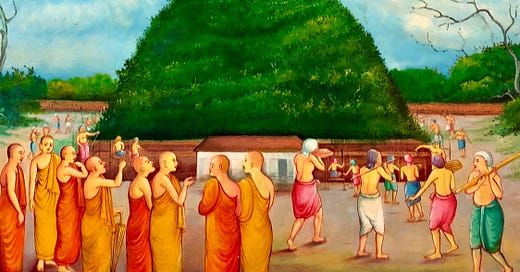Liberty & the Lotus Issue #3
[Note: This is a Newsletter version of a longer academic article I plan to publish on the same topic]
The Pragmatic Paradox
The smiling face of Buddhism permeates Western culture—from meditation apps to mindfulness seminars to the Dalai Lama's infectious laugh. Yet beneath this serene surface lies a complex and often troubling history of Buddhist institutions' relationship with human bondage.
Step into a Buddhist monastery in 7th-century India and you'd witness an uncomfortable paradox: monks sitting comfortably inside, seeking liberation from suffering, while slaves toiled in the fields and kitchens to maintain their earthly needs. This wasn't an aberration—it was standard practice. Buddhist monasteries were major landholders and economic powerhouses that relied extensively on unfree labor.
The contradiction is striking: Buddhism preaches universal compassion and the end of suffering, yet its institutions help perpetuate one of humanity's cruelest practices. The Vinaya, Buddhism's monastic code, explicitly prohibits individual monks from owning slaves. Yet monasteries, as institutions, found creative legal frameworks to maintain unfree labor while technically adhering to doctrine.




